Today marks the 20th anniversary of the Chernobyl nuclear disaster. Photojournalist Lionel Delevingne is in Kiev, Ukraine for MotherJones.com, covering the commemorations. At the weekend he took a bus trip, laid on by the Ukrainian Ministry of Catastrophes, with a group of journalists and NGO activists, to the site of the disaster. A selection of photos below.
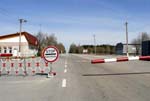
Enlarge image
Entering the 30km “Exclusion Zone” surrounding the disaster site. Entry and exit are strictly controlled by checkpoints like this one. Chernobyl is about 70 miles north of Kiev, the Ukrainian capital.

Enlarge image
A sign at the same checkpoint warns of the danger of entering the exclusion zone, which is highly contaminated by radioactive material.
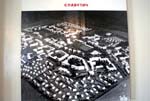
Enlarge image
An aerial photo of the Chernobyl site at the Ukrainian Ministry of Catastrophes.

View image
The bus, carrying journalists and NGO activists supervised by Ukrainian government representatives, heads toward the disaster site in the center of the Exclusion Zone.
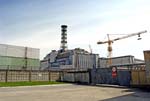
Enlarge image
Reactor number 4, where the explosion occurred on April 26, 1986. It has been encased in a concrete “sarcophagus” to contain radioactive material. Unfortunately, the structure was hastily built and is in danger of collapsing.
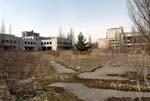
Enlarge image
Abandoned buildings in the “model town” of Pripyat, designed to house nuclear workers and their families.

Enlarge image
Although hundreds of thousands of people were permanently evacuated from their homes in the region surrounding the plant, some, like these, have insisted on returning, effectively becoming squatters in their former homes. About 38 people are thought to live in the highly contaminated Exclusion Zone.
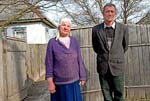
Enlarge image
Boyar Erdokia and husband of the village of Illincy, in the Exclusion Zone. They insisted on returning to their former home.

Enlarge image
A woman who lives in the Exclusion Zone.

Enlarge image
Feodor Ivanovich, 78, of Illincy Village.

Enlarge image
A Soviet-era helicopter and buses used to evacuate residents at the time of the disaster sit in one of several “graveyards” in the Exclusion Zone. They are highly contaminated.

Enlarge image
A journalist contemplates the disaster site from the bus.











